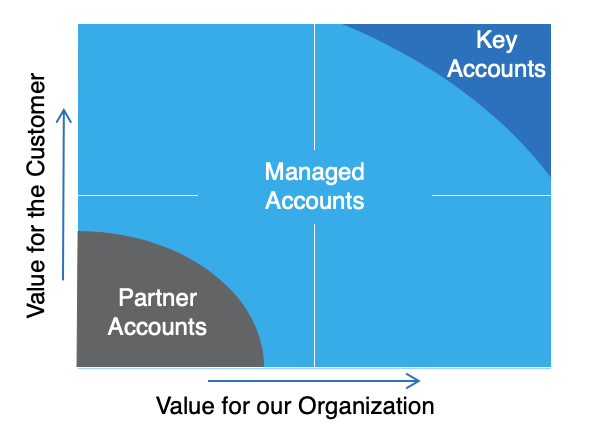Grow with Existing Customers
Close more deals in less time
The Sales Funnel plays the same critical role in growing your business with existing Customers as it does for Growing with New Business. It is the conveyor belt that carries your deals forward towards closure whilst the various roles and departments collaboratively work on moving the deals forward.
You need a consistent Sales Funnel with clear stages to be able to run diagnostics and draw conclusions on how to accelerate your Funnel. Common issues and improvement objectives are:
- Sales Reps spending time on opportunities that are not really opportunities, and hence should be recycled to marketing for further nurturing. Sales Reps should be rigorous in the first stage of the Sales Funnel in their evaluation of a new opportunity. Is the Opportunity Real? Can we Win it? and, is it Worh it? If not all three checks can be made positively then it's not an Opportunity
- Sales Reps spending time on opportunities they can not move forward due to lack of commitment, budget or 'need' on the customer side. "Deadwood" should be removed and Sales should focus on opportunities they can move forward
- Deals that get stuck due to lack of support that the Sales Reps might require. For example, support from Legal in the contracting stage of the Sales Funnel. Sales Priorities should be leading to anyone in the organization, and only overruled by exceptions by top management
- Replicating success to other Sales Reps, Teams, or Regions. Analysis of top-performers often reveals things that can be replicated and taught to other Sales Reps
Maximize Customer Lifetime Value
The Customer Data you have aggregated can provide the insights you need to maximize the Customer Lifetime. Below are the building blocks that will jointly will assure you maximize
Build a Customer Segmentation to differentiate your Service Levels
A Customer Segmentation will provide you with the means to focus your Team. It will define who is important to you, and how important you are to them. It prevents spending too much time and effort on Customers that are not worth it. Conversely, it assures you don't spend too little time on your most valuable Customers. The below figure illustrates how you can build a Customer Segmentation based on the value for the Customer and the value for your own Organization. The next step would be to define how much time and effort you will 'allow' your Team to spend on each of the Customer Segments and capture this in clear Service Level definitions. For example, free samples can be provided to Key Accounts, Managed Accounts need to pay for shipping and handling, and Partners Accounts also need to pay for the Sample.

Define your Account and Key Account Management processes
Your Customer Segmentation provides you with a differentiation in Key Accounts and Managed Accounts (see example above). Your Service Levels define the services each segment is eligible for. But what does this mean in practice? How do you provide guidance to your Sales Reps in what you expect from their engagement with the Accounts they are responsible for?
Account & Key Account Management define the processes and principles you want your Sales Reps to follow. It drives the Account Planning and Execution of your team. For example, each Key Account has a Key Account plan that is updated yearly, with a SWOT and clear targets. Each Managed Account does not have an Account Plan but does have a yearly target that is integrated into the yearly sales plan.
Maximize Customer Retention
Common objectives in structurally and pro-actively managing Customer retention are
-
- Structurally and pro-actively managing expiring Customer contracts. Expiring contracts should trigger a renewal opportunity that Sales can pursue, preferably managed as an Opportunity (with negative potential) in the Sales funnel.
- Monitoring Customer relations through e.g. (relational) NPS metrics and actively managing the Detractors
- Monitoring Customer Satisfaction through e.g. (transactional) NPS and CuSat and actively managing outlier and improving service accordingly
- Actively involving Sales (as the owner of the Customer) in the Customer Complaint Management process
- Structurally and pro-actively manage Customers that drop out of a recurring ordering pattern
Drive Customer Growth through Cross-Selling and Up-Selling
The Customer Data you have aggregated can provide the insights you need to directly identify up-selling and cross-selling Opportunities that you can assign to a specific Sales Rep in the Sales Funnel. The existing Performance Management of the Sales Funnel can then be used to maximize the results from the cross- and up-sell opportunities.
Related Content:
Need help? Start with a free intake meeting!
We can quickly assess your value potential and outline a realization plan. Call us today or fill in the details below to book a free intake meeting.




